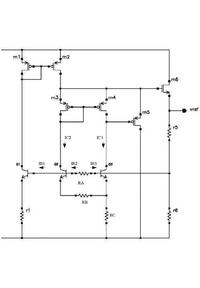leonwang
Junior Member level 1
As for the picture in my attachment, you can see a resistor in series with the base of bipolar of a bandgap.
If there is no resistor here, the base current is from r5 and then that will increase the output reference voltage than its nominal value. To decrease this affect, the resistor is put at the base of bipolar.
But, how can I calculate the resistor value ? Could anybody help me?
Thank you very much!!!!!
If there is no resistor here, the base current is from r5 and then that will increase the output reference voltage than its nominal value. To decrease this affect, the resistor is put at the base of bipolar.
But, how can I calculate the resistor value ? Could anybody help me?
Thank you very much!!!!!
